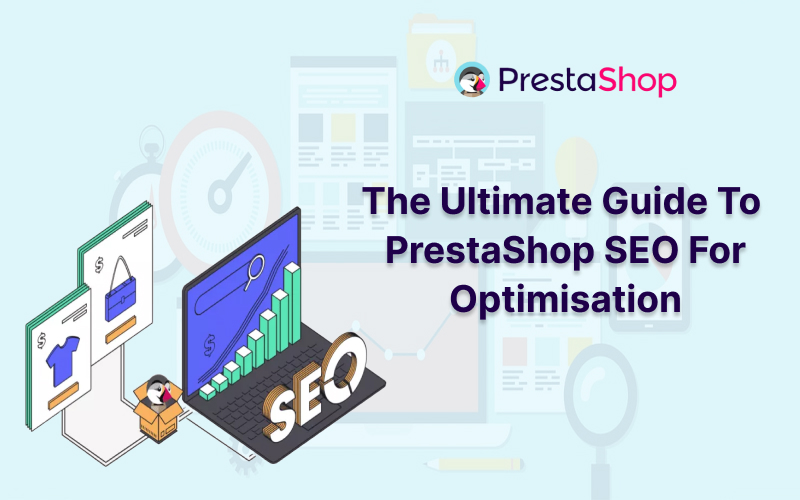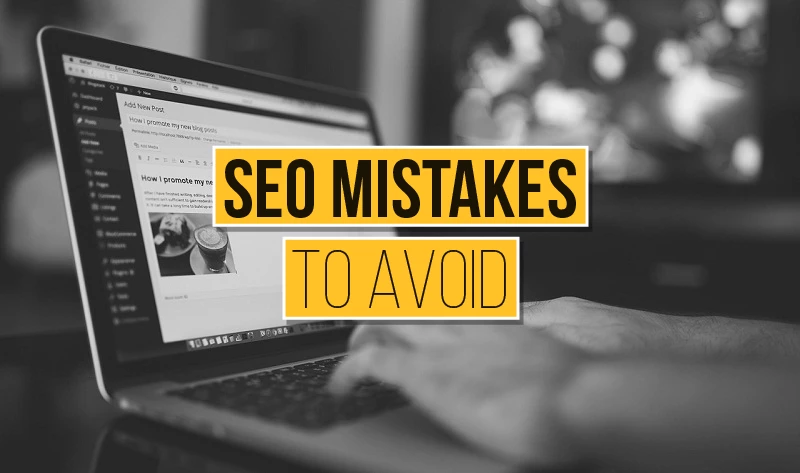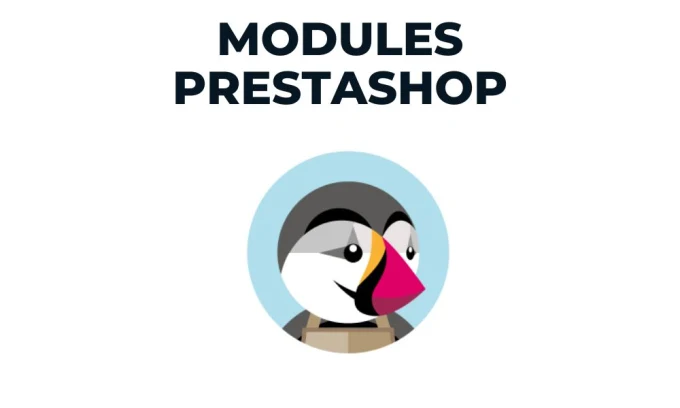
In the digital age, being ranked high on the results pages of search engines (SERPs) is like having your store at the top of an area that is crowded to have an actual shop. With the numerous online retailers that are competing for attention How can you make sure that your PrestaShop website is noticed by the right audience? Enter PrestaShop SEO.
PrestaShop can be described as an open-source eCommerce platform that lets users to manage and create their own website. Like an appealing physical store, it draws customers and visitors are drawn to it, your PrestaShop store must be SEO-friendly to get clients.
This guide will provide you with the required skills to become a PrestaShop SEO expert. We’ll go through the basics such as “prestashop seo tips” and “optimisation seo prestashop” and learn strategies to increase how you market your shop.
Table Of Contents
Understanding PrestaShop SEO
PrestaShop SEO is set of methods and strategies to increase its visibility for your shop via search engines like Google. An effective SEO strategy will help your website to appear more prominent in search engine results, which means it will be able to attract more customers and increasing the sales. With the increasing competition online, being aware of PrestaShop SEO is essential.
Why SEO is Crucial for PrestaShop
SEO is vital for every online store. It’s particularly crucial for PrestaShop customers because of its versatility and features. Optimizing your PrestaShop website will result in better rankings on search engines and also an improved user experience and a higher percentage for conversion.
Key PrestaShop SEO Tips
Keyword Research

Start by conducting a thorough search of keywords. Search for keywords that are relevant to your business niche. Tools like Google Keyword Planner or Ahrefs will assist you in identifying what keywords your customers are searching for. Be sure to pay attention to keywords that have special words that have a lengthy tail (specific keywords) to attract buyers who are highly motivated.
On-Page SEO

- Keywords in the Meta Descriptions or title Tags ensure that each website page on your site is distinctive, as and descriptive Meta description and titles that include the most crucial keywords.
- Headings Use H1 tags to define primary headings and H2/H3 tags for subheadings. Naturally, you should include keywords in those tags.
- Descriptions of Products: Provide compelling and detailed descriptions of your products. Make sure that there’s no duplicate content by writing an individual description for each item.
- URL Structure: Use SEO-friendly URLs. Simple, keyword-rich URLs are better for both search engines and users (e.g., “/mens-running-shoes” instead of “/productid=12345”).
- Internal linking: Create an effective plan for internal linking. Link to related blog articles, categories or products to keep your users interested and aid search engines comprehend the structure of your website.
Image Optimization

- Alt Text: Add descriptive alt text for every image that contains relevant keywords.
- Name of File: Name files with keywords rather than generic names.
- The speed of load: Improve the speed of your images, use the caching feature in your browser and consider using a content delivery network (CDN) to improve your website’s performance.
Mobile Optimization
Check that you ensure that your PrestaShop site is responsive to mobile devices. Google’s mobile-first indexing policy suggests that having an optimized mobile site can significantly affect your rankings.
User Experience (UX)
Create an effortless and seamless purchase experience which is effortless and seamless. Clear navigation and clear calls-to-action along with a secure checkout can improve customer satisfaction and reduce percentages of bounces.
Advanced SEO Strategies for PrestaShop

- Schema Markup: Make use of schema markups in order to help search engines to understand the content. This increases the chance of being prominently displayed in rich snippets, and increases the number of clicks. PrestaShop provides modules that let you add schema markups within only a couple of minutes.
- Content Marketing: Continuously publish relevant, high-quality information. Articles on guides, blogs and instructional videos on your products are an easy method to include keywords and give useful information to your customers.
- backlink building: Get high-quality backlinks on trusted websites that are relevant to your industry. This lets search engines know that your site is reliable and trustworthy. Participate in guest blogging, collaborations with other websites and collaborations with influential people to improve your reputation as a backlink provider.
- Integrating Social Media Marketing your products and content through the social networks. Social signals could impact SEO by bringing more the number of visitors to your site and increasing engagement.
- Monitoring and Analysis: Use tools like Google Analytics and Google Search Console to evaluate the effectiveness on your SEO. Track metrics such as organic search bounce rate as well as conversion ratios and traffic. Modify your strategies in accordance with these indicators to continuously improve your SEO strategies.
Common SEO Mistakes to Avoid in PrestaShop

- Don’t ignore SEO because of technical reasons. Ensure that your website’s functionality is in place. Always check for issues like damaged hyperlinks, duplicate content, and errors with crawling. Utilize PrestaShop’s built-in tools and third-party plugins to find and correct technical problems.
- Don’t overlook the importance of local SEO. It is a blunder. If you run an organization with a physical location, local SEO is crucial. Join your company with Google My Business and other local directories. Make sure your website is optimized to make it local-friendly and also encourage your clients to write reviews.
- Keyword Stuffing Do not use too many keyword phrases. Keyword stuffing can lead to penalizations for engines. Focus on writing naturally and providing your reader something of worth.
- The web isn’t not paying attention to mobile users, a significant amount of internet traffic is generated by mobile devices. Make certain that the PrestaShop site is dynamic and offers the best user experience on any device.
- aren’t keeping pace with SEO The most recent developments regarding SEO: SEO is constantly changing. Be aware of the latest algorithmic changes and developments. Follow reliable SEO forums and blogs to make sure your strategies are current.
Utilizing PrestaShop Modules for SEO

PrestaShop offers a wide range of options to help enhance your SEO. These include:
- SEO Expert helps you in enhancing meta tags for description of products and URLs. It also offers SEO analysis and suggestions.
- Beautiful URLs software eliminates identification numbers from URLs. This makes pages clear and SEO-friendly.
- Image Optimizing: Use tools that allow you to optimize and compress images for faster loading times without sacrificing quality.
- Google Sitemap automatically generate XML sitemaps to help spiders browse your website more effectively.
- Themevolty’s Module: This powerful SEO tool provides features to enhance meta tags by manage keywords and creating search engine friendly URLs. It also offers suggestions and insights to improve the SEO strategy you use.
Conclusion
Learning SEO in order to improve your PrestaShop store is vital to growing traffic, improving the customer experience, and boosting revenue. Implementing the below PrestaShop SEO tips and techniques to improve the performance of your online store so that you are more visible in search results and attract greater buyers. Keep up-to-date with the latest SEO methods and continually alter your strategies to ensure that you are competitive in the marketplace for online shopping.


By UpcomingWeb 10/27/2025 05:32:42
Good information, about Prestashop SEO for Optimization, This is very useful to improve the performance of the website and improving customer experience. we need to follow the updated SEO Tools and Algorithms because, those are not constant forever, those are evolving and introduce new features to make ease the work. In this digital world UpcomingWeb also actively participating. following through https://upcomingweb.com/
By Blenderhgx 03/16/2025 12:17:51
works of art.
By John 11/29/2024 03:31:34
Very usefull detail